Juneteenth celebrates enforcement of the Emancipation Proclamation reaching the westernmost Confederate state of Texas. The Proclamation went into effect in 1863, but this news was purposefully withheld from enslaved people until the arrival of Union troops in Galveston Bay, Texas on June 19, 1865.
Juneteenth marks our country’s second independence day.
What is Juneteenth?
Juneteenth is a contraction of the words June and nineteenth. It’s also known as Freedom Day, Jubilee Day, Liberation Day, and Emancipation Day. Juneteenth is a reminder of the fight for racial equality for African Americans, a fight which is still relevant today. July 4, 1776 signifies the United States’ freedom or separation from Great Britain, but freedom from slavery did not come until after the American Civil War.
Abraham Lincoln’s Emancipation Proclamation freed all enslaved persons in the Confederate States of America in rebellion against the United States. However, military intervention was needed to enforce it.
On June 19, 1865, Union General Gordon Granger arrived in Galveston, Texas to enforce the emancipation of the enslaved in Texas. Slave owners in isolated rural areas purposefully withheld news of emancipation in order to harvest crops using enslaved laborers.
Juneteenth Flag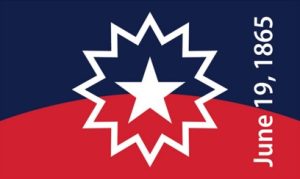
First flown in 2000, the Juneteenth flag was designed by Ben Haith, founder of the National Juneteenth Celebration.
Red, White & Blue – drawn from the American flag, to symbolize that all enslaved people and their descendants are American.
Star – Represents the “Lone Star State” of Texas where Juneteenth began, but also the freedom of African Americans in all 50 states.
Arc – Symbolizes the new horizon of opportunity for black people.
Red – Symbolizes blood shed by African American Slaves for the United States.
June 19, 1865 – Marks the date General Gordon Granger arrived in Galveston, Texas to liberate those still enslaved there.
Traditions
Early celebrations centered around providing voting instructions to the newly freed slaves. As the holiday progressed, celebrations moved to parades with brass bands culminating in programs at churches. Traditional celebrations include the singing of “Lift Every Voice and Sing,” picnics, rodeos, street fairs, public readings of the Emancipation Proclamation, cookouts, family reunions, park parties, historical reenactments, blues festivals and reading works of African American authors.
Voices of Freedom
An examination of how the meaning and expression of freedom changed over time as seen through the eyes of these six figures from Black history.

Aggy, portrayed by Mary Carter.
I was born a slave to Ryland Randolph at his Turkey Island plantation on the James River. I was made to work in the house that the passersby called, the “bird cage.” As much as it may have seemed that my master favored me, that’s exactly what I felt like, a caged bird. Day after day, month after month, year after year, forced into labor by my master. When he died in 1784, I thought it all was coming to an end, Ryland left me and two children, Sylvia Anderson and Alexander Phillip, our freedom! Not only did he leave us freedom, he left us all his furniture from the house, including the gold and silver, transportation to England, and a trust fund for our support!
To say the least, I was beside myself with joy. My children and I would be going to England together! But don’t you know, there is always something or someone in the way of happiness? This bump in the road was named Richard Randolph. That’s right, Ryland’s brother, executor of his will, and our neighbor at Curles Neck Plantation… Richard refused to honor his brother’s will and kept us enslaved. When Richard died in 1788, he said we could be free, if we didn’t ask for all the things Ryland promised us. How about that? We could be free if we stayed quiet!
Well, let’s just say, Richard’s will was executed the same way he executed Ryland’s… Richard’s four sons, Richard, David Meade, Brett, and Ryland, seemed suited to keep things the way they were. That wasn’t good enough for me. I brought a challenge to my and my children’s enslavement in court, and I found an advocate to represent me. The Henrico County Chancery Court recognized my situation could be illegal and allowed us to proceed! My Bill of Complaint was sent, along with subpoenas, to Richard’s sons and they were told to appear in court.
For the next two years, I waited… and waited… and waited. They never showed up! The court FINALLY issued a Default Decree, granting ABSOLUTE FREEDOM to my children, and myself. I wish I could say that this is where our lives became something of legend, but sadly it isn’t. We never received our rightful inheritance from Ryland’s estate. We never made it to England. The last time I was even mentioned in public records when I went to the Henrico County Clerk to receive my certificate of freedom.
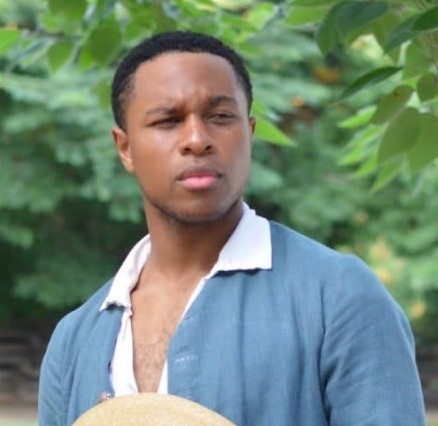
London Pleasants, portrayed by Jamar Jones.e
My name is London Pleasants. Pleasants is actually the last name of my master’s family, but everyone always calls me Pleasants too. I was born into the Pleasant’s immense wealth along the banks of the James River in Henrico County. John Pleasants held claim to 536 slaves and who knows how much land. But when John died in 1771, he wanted all of us freed by the time we were 30 years old. The laws in Virginia didn’t allow for us to be free, so John left instructions for his children to treat us as if we were free, and when the laws allowed, let us go.
John Pleasants’ son Robert took up our cause and was very active in opposing slavery, but Robert faced some tough competition. The country was at war! Men of the 13 colonies banded together and wrote up a list of grievances to the King of England, calling it a “Declaration of Independence.” They say that the King did this and the King has done that… all the while, me and my family are still slaves!
Well, you know what? The governor of Virginia, Lord Dunmore, made a decree. All indentured servants AND NEGROES willing to take up arms against the rebels, they would be granted FREEDOM! I honestly could not believe it! Word was getting passed around like wildfire. Men from surrounding plantations were joining up, and Lord Dunmore sent out patrols to collect men willing to fight. I heard that so many men joined, they started their own regiment. They were called the “Ethiopian Regiment.” I was only nine years old at the time, so everyone told me to wait. So, I waited. I waited for five years… I ran off at 14 and joined the army! And wouldn’t you know it, I was put into the American Legion under the command of Brigadier General Benedict Arnold. We spent a good amount of time chasing Governor Jefferson and raiding the Richmond countryside.
The only real issue I found with the British army, was the fact that General Cornwallis surrendered, and the English lost the war! In April of 1783, they tried to make good on their promises to us negroes and evacuate us out of New York to Nova Scotia. I’m headed to a place called Port Roseway. People say there is a settlement of Black Loyalists there. Men and women are being evacuated, but I’m told there is a meeting with General Washington which could change things…the American Congress has a resolution regarding “the delivery of all Negroes and other property.”
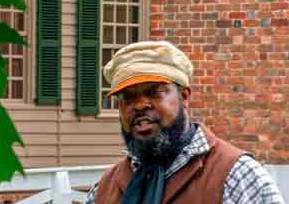
Gabriel, portrayed by Willie Wright.
Some people call me General, some call me Prosser, others call me Bingham, but you can call me Gabriel. I was born in 1776, the year the Declaration of Independence was signed. But it wasn’t my independence that was written in that document. I was born a slave on Thomas Prosser’s plantation called Brookfield. I was always a larger fellow, so I when I was about ten, I started training in the trade of Blacksmith. Now Thomas Prosser’s son, Thomas Henry, is the kind of man who likes to make a lot of money, so he started shopping my skills out to other farms. I’ve made horseshoes, plows, scythes, wheels, harnesses, tools… if it’s made of metal, I’ve probably made it. And I’ve done a lot of travelling too. In and out of Henrico County, the City of Richmond, Hanover County… yeah, I’ve seen a lot of places, and met a lot of people. I’ve met white people, black people, Indian people, and a lot of people who are fed up with the way things are. Tired of a few people telling a lot of people what they can say and do.
I’d been reading newspapers and listening to what’s been going on down in Haiti. Toussaint Louverture had them folks running scared! Those men took their freedom, just like General Washington did to the British. It’s about time we took our freedom here in Virginia too! The black folks outnumber the white folks here in Virginia, just like in Haiti. We can do it. It’s going to take a lot of planning. We’ll stick to the outlying farms mostly, and we’ll recruit men to our cause. My brother Solomon and I have been having meetings at night by campfire. The pieces to our puzzle are coming together, but our last step is to talk with Pharaoh and Thom from Mosby Sheppard’s Meadow Farm…
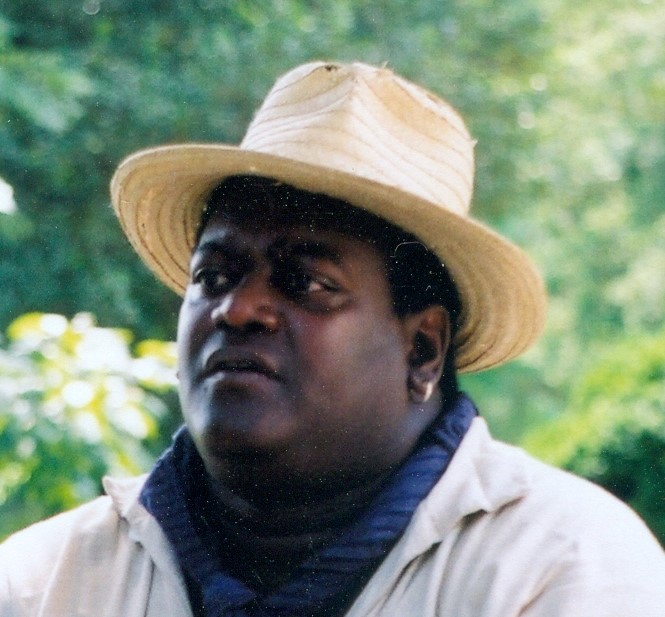
Pharaoh and Thom. Pharaoh portrayed by Dylan Pritchett.
Our names are Pharaoh and Thom. We are overseers at Meadow Farm in Henrico County. We oversee the daily work for Mosby Sheppard and his wife Mary Glen Crenshaw Sheppard. Now we’ve never been ones for trouble, but we were approached by these two blacksmiths named Gabriel and Solomon. We’ve known them for a while as Gabriel has done work for almost everyone in the area, but this time was different. Gabriel was talking about killing our master and his family and taking Governor Monroe prisoner! We will admit, Gabriel really sold it to us. I do believe that man could sell a drowning man a glass of water, but something just didn’t feel right. On the night we were supposed to meet up, a great big storm came about! It was so bad that bridges were washed out and the roads were just awful. So that was our sign! We didn’t need to get involved.
So, when the word came from Gabriel that we would meet the following night, we had to tell Mosby. We went into his counting house and closed the door behind us. We told him all about the plot and how it was supposed to work. Mosby wrote a letter to the Governor and believe it or not, they believed us! Governor Monroe sent out the militia and started arresting men in the city, out in the countryside…and Gabriel was on the run! They finally caught him and put him on trial. He and the organizers were executed on the city gallows for their failed rebellion.
As for us, life kind of went back to normal for us, but people keep talking about “meritorious service.” We’re not sure what that means, but it sounds pretty good.
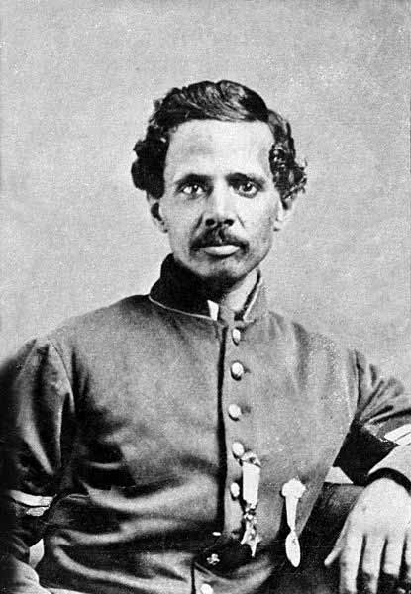
Powhatan Beaty
My name is Powhatan. Named after the great leader of the Powhatan Confederacy from the beginnings of Virginia’s history. I was born into slavery on October 8, 1837 in Richmond, Virginia. I moved to Cincinnati, Ohio in 1849 where I received an education, something I couldn’t have received in my home state of Virginia. I gained my freedom from slavery, and while living in Cincinnati I learned how to build cabinets and I became interested in the theater.
After the War of Rebellion had been waging for three years, I decided to join the federal army, because what is freedom but deciding what you want to do for yourself? I was promoted to sergeant and put in charge of 47 other recruits and on June 17, 1863, me and my squad became the first members of the 127th Ohio Volunteer Infantry, but we later received the designation of the 5th United States Colored Troops (USCTs).
By September 1864 I had risen to the rank of fist sergeant in Company G. My regiment was a part of a division of USCTs assigned to attack the heart of Confederate defenses at New Market Heights (Battle of Chaffin’s Farm) in my home state of Virginia. Our attack was pushed back by the rebels and we started to retreat. Our color bearer was killed during the retreat and without thinking, I ran to cover 600 yards under enemy fire to recover the flag. The fighting was so intense that out of our eight officers and 83 enlisted men, only myself and 16 other enlisted men survived the attack unwounded.
Since our officers were wounded or killed, I took command of the company and led a second charge toward the rebel lines. We were able to push the Confederates back and won the day!! General Benjamin Butler gave me special commendation for the battle and then on April 9, 1865, I was awarded the Medal of Honor! My medal’s citation says, “Took command of his company, all the officers having been killed or wounded, and gallantly led it.” The last time I was in Virginia, I wasn’t even allowed to read, now I’m getting a medal for leading troops into battle…
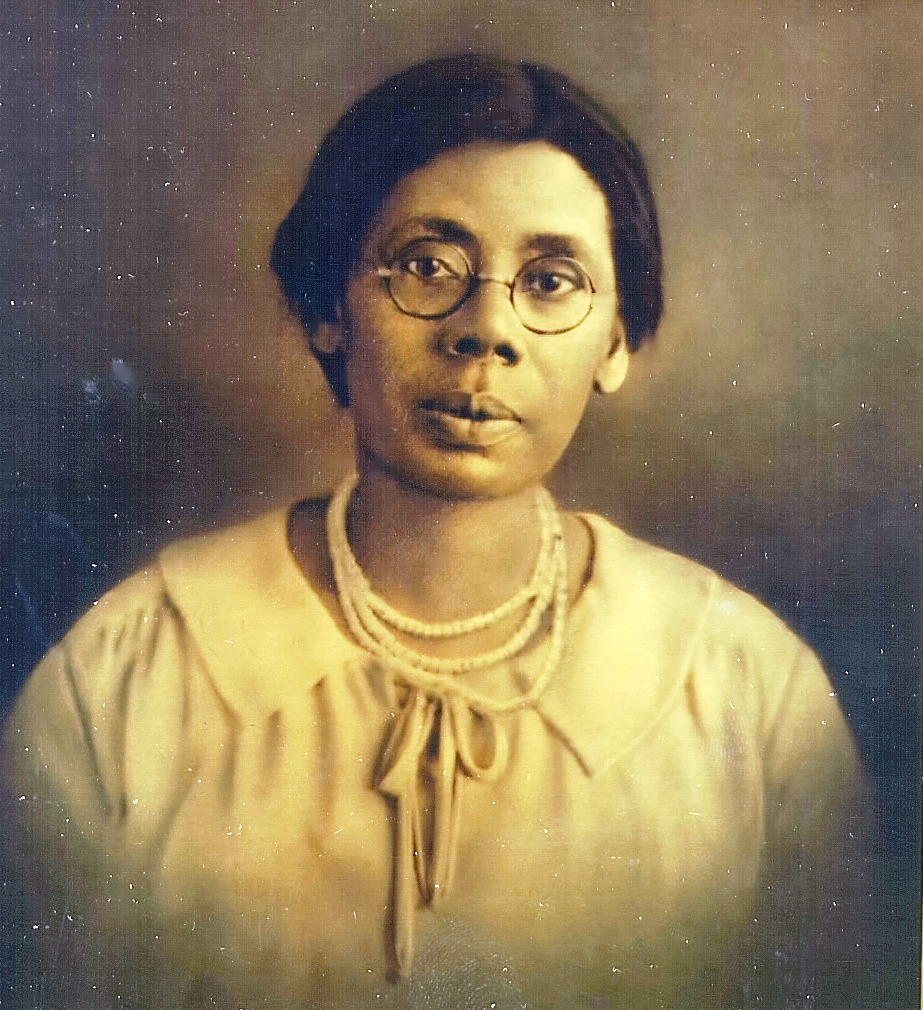
Virginia Randolph
I’m Ms. Virginia, or Ms. Randolph as my students call me. You may know about me from the school I run on Mountain Road in Glen Allen, or maybe because of my work as the Jeanes Supervisor for Henrico Schools, my educational plan, or even one of my many students. Either way I’m glad to meet you.
I was born in May 1870 in Richmond, Virginia. Yes, that’s right, I was born only five years after the war and the city of Richmond was recovering. My parents had been enslaved prior to the war and only received their freedom when the war ended. My father was the late Edward Nelson Randolph and my mother, Sarah Elizabeth Carter Randolph. My father was a bricklayer and my mother kept houses for other people. I have an older sister, and two younger. When I was eight years old, I entered Baker School, the first public school for black children in the city. I then attended the Richmond Colored Normal School where I soon became interested in becoming a teacher.
I began my career as a schoolteacher in Goochland County, then I went to Hanover in 1893. My real break came when I secured a teaching position in Henrico. I opened a one-room schoolhouse on Mountain Road and my life changed forever. No, the school wasn’t much to look at. It was quite bare within and without, much like the condition of most colored schools throughout the south. Not deterred at all, I set out to improve the conditions of the school, and the morale of the students and families I would teach there. I began recruiting students from all over Henrico to come to my school, and most of all, I had to instill pride in their communities.
It wasn’t long before I met a few challenges. I developed an educational plan which I thought would best suit my students. My father had been a brick mason and my mother a housekeeper, two noble professions in which I believed my students needed training. I added sewing, basketmaking, cooking, and other practical trades which should suit them in their lives. Many of their parents think I should stick to teaching about Aristotle, Socrates, William Shakespeare… well Mr. Shakespeare is not going to prepare these young people for the world after school. No one has ever said, “I need these bricks laid, but could you recite Romeo and Juliet?” What good is all this knowledge if you do not know how to use your hands?
Well, I soon found supporters too. Mr. Jackson Davis, supervisor of the Henrico Schools wrote to Mr. Dillard of the Anna Jeanes Fund to secure a position for me. Using my educational plan, which he calls “The Henrico Plan,” I’ve been named a “Jeanes Supervising Industrial Teacher.” My new position is to promote my educational plan at all the colored schools throughout the county and some of the surrounding localities. Not only did my duties include visiting each of the county schools during the week, it also brought recognition to the lacking nature of the black schools. My teachers and I created civic organizations in the community whose responsibilities were to raise funds for our schools and improve the conditions for our students.
All the while, I’d been lobbying the county for a training school for high school students at our Mountain Road site. I was able to get a new school built in 1915, and wouldn’t you know it, the county decided to name the new training school after me! The Virginia Randolph Training School officially opened but only 12 years later, it burned down. We were all a bit discouraged but again, I got to work. We approached the Rosenwald Fund, led by Julius Rosenwald, president of the Sear Roebuck Company. Mr. Rosenwald provided millions of dollars towards the construction of negro schools all over the South. The county put some money in, the Rosenwald Fund paid for the rest, and we were able to build a new school, with an auditorium.
You know, when I started teaching at the school on Mountain Road, we only had 14 students. When I decided to retire, the school bearing my name now houses 400. You can say I worked hard. Well I did, but I had lots of help. Now you know some of my story.
Visit
Richmond
Black History Museum and Cultural Center of Virginia
Petersburg
Pocahontas Island Black History Museum
Tidewater
Freedom Bell (Williamsburg)
Fort Monroe & Emancipation Oak (Hampton)
Farmville
Washington D.C.
National Museum of African American History & Culture
Read
- Virginia Untold: The African American Narrative at the Library of Virginia. This project aims to provide greater accessibility to pre-1865 African American history and genealogy in the library’s primary source collection.
- African American Research at the Library of Virginia to 1870. This document explains how different primary sources are used in stitching together the stories of African Americans.
- Association for the Study of African American Life & History (ASALH). Est. 1915, ASALH are the founders of Black History Month and decide on its theme each year. They work to promote public and local history projects and have a variety of online resources.
- Henrico African American Trailblazers. As part of Henrico County’s 400th celebration, a series of plaques were placed in recreation centers and libraries around the county featuring biographies of 24 influential African American figures from Henrico County.


